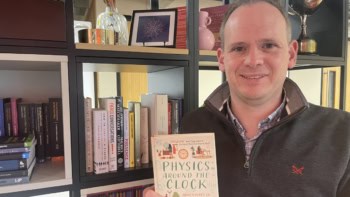
The Daresbury laboratory (Credit: STFC Daresbury Laboratory)
By Matin Durrani
Reporting the opening of new facilities is grist to the mill for us on Physics World. That’s why we ran a long article in last month’s print issue about the opening of the new “second target station” at the ISIS pulsed-neutron source at the Rutherford Appleton Laboratory near Oxford in the UK.
The £145m upgrade to the ISIS facility, which is used for a wide range of neutron-scattering experiments, moved a step closer to completion today when the first neutrons were created in the new station.
But spare a thought for the Synchrotron Radiation Source (SRS) at the Daresbury Laboratory in Cheshire, in the north-west of England, which officially closes today after 28 years of operation and two million hours of science.
The closure was not unexpected, of course. The SRS had been winding down ever since the decision was made in 2000 to build its replacement — the DIAMOND third-generation synchrotron at the Rutherford lab. It was a decision that caused huge outrage at the time from local politicians and scientists furious at a big new facility being built “down south”, as if Oxford needed any more top-class labs.
Still, for anyone who has carried out an experiment at the SRS, like I have during my PhD days, it’s time to reflect on the fact that the facility was pretty successful.
The press release from the Science and Technology Facilities Council lists the stats — 11,000 users used the machine, leading to over 5000 papers and over 1200 protein structures being solved.
But who can forget those bleary-eyed nights squeezing out every last drop of “beam time” by doing a series of complex experiments at 4 in the morning, all the while keeping going on a diet of Mars bars, Snickers bars and black coffee from the chocolate machine, bloated by delightful meals from the Ring O’Bells pub over the road (do you want that with or without “potato croquettes”?) before stumbling off to bed at 7am in the hostel and then repeating the whole procedure for another three days?
That’s the real world of scientific research for you.



